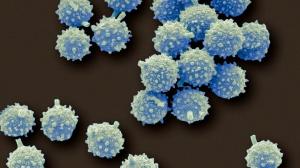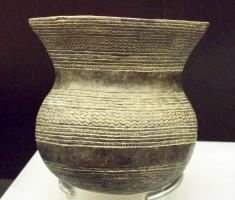Holocene: what is it, duration and characteristics of this era
Geological time scales allow us to place our existence at a specific point and, In addition, to know what the life of our ancestors was like and the first living beings that inhabited the Land.
Although human beings have transformed this planet to our liking and need, the reality is that the Earth is inconceivably old, since its origin is placed 4,543 billion years. We are not even capable, as a species, of imagining such a wide time scale.
Life arose about 3,500 million years ago, causing various radiations through processes of speciation and evolution, which which has led us to the almost one and a half million animal species described today (although it is estimated that there are more than 7 millions). The genus Homo (to which we belong) appeared approximately 2.5 million years ago, changing the destiny of our planet in an irremediable way.
When we talk about geological epochs and periods, we usually go back to the Cambrian and its explosion of species aquatic with forms of alien crustaceans, or to the Jurassic and the domain of dinosaurs and creatures of carvings unthinkable. What is rarely explored, due to its proximity to the present, is
the Holocene, the time in which you and I meet. Do you know what surrounds us on a temporal level and what awaits us as a species? Here we tell you.- Related article: "The 6 stages of Prehistory"
What is the Holocene?
The Holocene is a geological timescale division, the last (and present) epoch of the Quaternary period. The Holocene is a time encompassed in the Quaternary period, which in turn is part of the Cenozoic Era. To understand a little better all these terms, we exemplify this division with a small diagram.
It was Cenozoic: It started about 66 million years ago and continues to this day. It is the third (and last) era of the Phanerozoic eon.
- Paleogene period: it began about 66 million years ago and ended 23 million years ago.
- Neogene period: covers 23 million years. ended 5.33 million years ago.
- Quaternary period: began 2.59 million years ago and extends to the present day. Includes the Pleistocene (began 2.59 million years ago and ended approximately 10,000 BC. C.; here the famous glacial period occurred); and the Holocene (began 11,700 years ago and extends to the present day and is considered the absolute reign of the human species).
Perhaps with this small list it has become clearer, right? The only human species that has lived throughout the entire Holocene is the Homo sapiens and, during it, we have developed as a society language, agriculture and, in short, the civilization on which all the foundations of our survival are laid. Unfortunately, all these advances have not come without the consequent ecosystem detriments, as we will see in later lines.
Holocene Characteristics
Since this time began until these lines have begun to be written, approximately 11,700 years have passed, so it is a bit complex to summarize everything that has happened this time interval without covering several volumes of a encyclopedia. Even so, we will make the effort to give you some general brushstrokes about it.
On a geological scale and taking into account the age of the Earth, about 12,000 years is quite little. For this reason, it is considered that the tectonic movements (continental drift) that have determined the study of other stages here are almost negligible: less than 1 kilometer, an irrelevant figure. However, it is necessary to bear in mind that the Holocene began after the last ice age, a type of climatic phenomenon that dominated during the Pleistocene.
As all that ice had to go somewhere with the rise in temperatures, at the beginning of this time the level from the sea increased by about 35 meters in height and 120 meters from the last glacial maximum, around 20,000 years ago. This change was not gradual, but took place in the form of “pulses”. It is interesting to know that, in addition, we are in an interglacial period, so it is not ruled out in absolute that in the future the Earth undergoes a massive glaciation (as has already happened in other occasions).
Evolution is not a mechanism that generally works at a dizzyingly fast rate, so there is little we can say when it comes to changes in flora and fauna. Although during these more than 10,000 years many species have become extinct, at the ecosystem level what has marked the most have been the changes in the distribution of taxa in different areas of the Earth, largely due to the action human. Anyway, it is known that large mammals prepared for life in the snow (mammoths and saber-toothed tigers, among others) disappeared between the late Pleistocene and early Holocene.
Since we do not have reliable fossil fauna to cling to (since there is no marked difference in human beings alive with respect to today), the Holocene is measured on the basis of the different stages of the development of the humanity. The beginning of this period corresponds to the European Mesolithic epoch, where the last human hunter-gatherer societies, primarily nomadic in nature, took place. From here, history writes itself.
- You may be interested in: "The 5 ages of History (and their characteristics)"
Holocene or Anthropocene?
To continue making an impartial historical journey through the Holocene without touching on certain issues, however thorny, would be to be untruthful. We must recognize it: the expansion and development of the human being has been exchanged for the well-being of planet Earth in exchange for progress. Thus, a part of the scientific community proposed at the beginning of the XXI century the term "Anthropocene" to replace the era in which we supposedly find ourselves, the Holocene.
Most ecologists, zoologists, conservatives (and scientists in general) agree on one thing: We are at the foot of a mass extinction that is advancing in terrifying ways. The current extinction rate is approximately 100 to 1,000 times higher than what is expected for Earth at the evolutionary level. Not even the worst episodes are equal to the present, because in these moments beings disappear alive on a scale (at least) 10 times greater than any past catastrophic period that you are happen.
Standardizing the changes that the Earth is undergoing is something complex, and therefore, an attempt is made to circumscribe the current "Anthropocene" on a basis of clear and quantifiable ideas at the physical-chemical level. Among the possible shuffled patterns are the following:
- Increase in atmospheric CO2, which is too gradual.
- Variations in the percentages of stable isotopes (non-radioactive nuclides) of carbon due to anthropic activity.
- Presence of radioactive isotopes due to atmospheric nuclear explosions, due to warlike episodes known to all.
- Increase in the level of sulfates registered in the ice sheets of both hemispheres, due to the eruption of the Tambora volcano in April 1815.
These are some of the “markings” that could be used to define the Anthropocene at a geological level, but, without a doubt, what determines it is the massive extinction of living beings and the degradation of ecosystems. The more the human species spreads, the less space for nature is available.
Without going any further, it is estimated that every 24 hours an average of 150-200 species of living beings disappear. Neither more nor less than a single day. Of all the species monitored by the International Union for Conservation of Nature (IUCN), 28% of them are threatened, some 35,500. We could continue to give devastating data, but we believe that the idea is more than clear: the Holocene or Anthropocene is characterized by human progress, but at the same time it implies the death and destruction of the planet as we know it.
Resume
After the data presented here, it is difficult to end on a positive note. The Holocene is characterized by human progress, with the negative and positive that this entails. During this period we have created language, and thanks to it, we have learned to name love, affection, affection and empathy. We have also traveled to the moon and discovered many secrets of the world around us, because without the human species, the term "knowledge" surely would not even have taken shape.
In short, our species is capable of both the most beautiful things and the worst crimes, and the events recorded throughout the Holocene exemplify this perfectly. Only time will tell where civilization and Earth itself are headed, but the current data is unfortunately not encouraging at all.
Bibliographic references:
- Arias-Maldonado, M. J. (2020). Anthropocene.
- Carpenter Slavens, J., & Sánchez, G. (2013). The environmental changes of the middle Holocene / late Holocene in the Sonoran desert and its implications in the diversification of the Yuto-Aztecano and the diffusion of corn. Andean Dialogue, (41), 199-210.
- Zamora, M. E., Huerta, A. H., Maqueo, O. P., Badillo, G. B., & Bernal, S. I. (2016). Global change: the Anthropocene. SCIENCE ergo-sum, Prospective Multidisciplinary Scientific Journal, 23 (1), 67-75.


